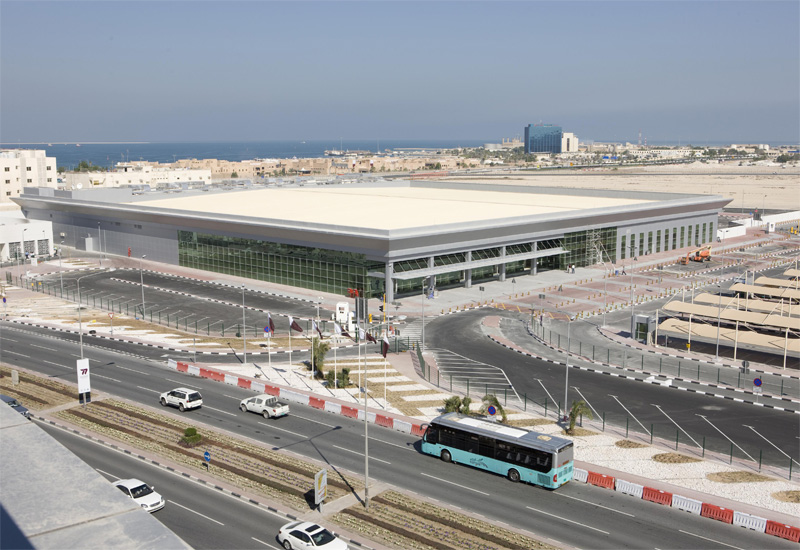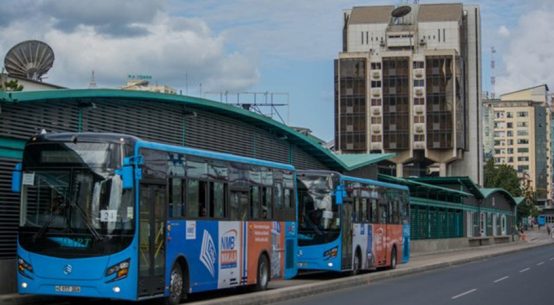
A terminal at Hamad International Airport in Doha.
Even amidst tough times, the Middle East air cargo market continues to surprise the world with the highest airfreight growth numbers compared with other regions. Overall decline in global air cargo market and excess capacity are major headwinds that the region is beginning to deal with.
Over the years, the Middle East region has undergone an unprecedented transformation to become an important centre for regional economic growth, which has also led to an increase in trade.
Aviation stakeholders continued to capitalise on the strategic location of airports in the Middle East. Significant capacity expansions positioned the region’s airports as aviation’s primary hubs for intercontinental travel.
“Although the Middle East region continues to witness growth in air freight volumes when compared to other global regions, overall economic and growth conditions around the world are having an effect on trade flows through the region. Air freight volumes in the region grew by 6.5 percent year on year in the first half of 2016, a figure that is lower than the 14.3 percent growth witnessed in the first half of 2015. In addition, air freight capacity globally has grown at a rate faster than demand compounding problems of overcapacity and driving down yields,” says Nabil Sultan, Emirates Divisional senior vice president Cargo.
Imagine your Ad placed here
According to the recent report released by Airports Council International, Middle East airports recorded the highest increase in airfreight compared with other regions (4.5 percent). At the country level, Qatar was the largest contributor to air freight growth in the region with Doha reporting a 20.4 percent growth rate for the first half of the year, equivalent to an additional 138,320 tonnes of cargo.
Doha’s Hamad International Airport is one of the top airports in the Middle East region. The airport is home to Qatar Airways Cargo, the third largest cargo airline in the world.
2016 started on a very positive note for Qatar Airways Cargo with the launch of freighters to Dallas in the US, followed by Budapest, Prague and Ho Chi Minh City and adding belly-hold cargo capacity to 10 destinations so far. It recently added two more freighter destinations to New York (JFK) in the US and Halifax, first in Canada.
“Further tonnage growth is expected for 2016 and onwards as more aircraft join the expanding fleet and more destinations are added to our global network. This has sparked our plans to create a second, even larger cargo terminal at Hamad International Airport. The new facility, combined with the current facility, will allow the cargo carrier to handle 4.4 million tonnes of cargo a year, an increase from today’s 1.4 million tonnes capacity. It will enhance the efficiency and service we already offered and put Qatar Airways Cargo into another league,” informs Ulrich Ogiermann, chief officer cargo of Qatar Airways.

Though the overall region sees increase in air cargo, Abu Dhabi International Airport sees downslide in cargo volume. It handled 68,640 tonnes of cargo volume in June this year compared to 72,949 tonnes in June 2015. This represents a decline of 5.9 percent. In the first six months of 2016, cargo volume stood at 389,191 tonnes, representing 6 percent decrease from the 414,203 tonnes handled in the first six months of 2015.
What may contribute to the cargo volume now at the airport is Etihad Cargo’s new travel offer for guests who want to travel with their luxury car over the summer period. They are offering 20 percent off to drivers on air cargo rates and their seat when they book in First or Business Class. The offer is available from Abu Dhabi to European destinations including Amsterdam, Berlin, Dusseldorf, Frankfurt, Geneva, London, Manchester, Milan, Munich, Paris and Zurich.
“Yes, we’ve had a number of bookings. Luxury car owners who travel to Europe for the summer often like to take their vehicles with them so we tailored a full service to cater to their needs. It is a service which is certainly more in demand in the Middle East than in any other market,” said David Kerr, senior vice president, Etihad Cargo.
Bahrain International Airport is undertaking $1 billion investment to build a new terminal at the airport which will not only benefit passengers but cargo section as well.
In the first six months of 2016, it handled various commodities varying from general cargo serving other logistic companies, valuable cargo, personal effects and dangerous goods.
“The plan is to expand the cargo and logistics footprint by a factor of 10 over 5 phases. Forecasted volumes should be at 2.5 million tonnes by 2030,” said Robert Mills, Cargo manager, Bahrain International Airport.
The airport has also planned new temperature controlled cargo village development in 2017. “In order to accommodate the goods in a protected environment and to maintain the cold chain process, Bahrain Airport Company will be developing an area dedicated to perishable goods (temperature controlled cargo village) where it will have the required space and the different type of storages (ambient, cold, frozen) to handle all types of goods that require temperature control such as fresh products, frozen products and medicines,” adds Mills.
Sharjah International Airport has five cargo terminals with a total floor area of 32,000 square metres seen as the region’s leading cargo hub served by dedicated cargo aircraft parking positions equipped to handle up to 16 aircraft of different types. Sharjah Aviation Services’ new CEIV Pharma and healthcare certified handling facility has enhanced its services to primary clients, exporters, importers as well as end-users both in the UAE and at the destination countries for transiting shipments.
Dubai International (DXB) saw 3.8 percent rise in air cargo volume to 1,282,025 tonnes during the first half of 2016 compared to 1,233,378 tonnes during the same period in 2015. DXB handled 226,175 tonnes of freight in June compared to 217,896 tonnes during the same month last year, an increase of 3.9 percent.
Primarily opened for cargo operations, Dubai World Central (DWC) is Dubai’s airport of the future. DWC handled 430,132 tonnes in the first half of 2016; a contraction of 2.9 percent compared to the first half of 2015 when the airport handled 443,011 tonnes of freight.
Al Maktoum International Airport, located in DWC, is home to Emirates SkyCargo which is world’s largest international cargo airline as measured by freight tonne-kilometres flown (FTKMs) with a growth of 6.8 percent (for the FY 2015-16). “We are also witnessing growth and a number of new developments in the field of time-sensitive shipments- notably that of logistics fulfilment fuelled by the growth of the e-commerce industry,” adds Sultan, Emirates SkyCargo.
Oman is set to become major Middle East logistics hub with the opening of the new terminal at Muscat International Airport which is expected to open as early as next year.
Follow us on TWITTER for more Logistics News Follow us on FACEBOOK for more Logistics News
Developments underway in the region will help the airports to expand cargo handling facility. While some airports see positive growth, some are battling through the tough times.
Middle Eastern carriers are facing the challenges of increasing capacity outpacing demand. This is a serious concern that the most promising air freight market in the world is beginning to deal with.
With reports from Stat Trade Times












